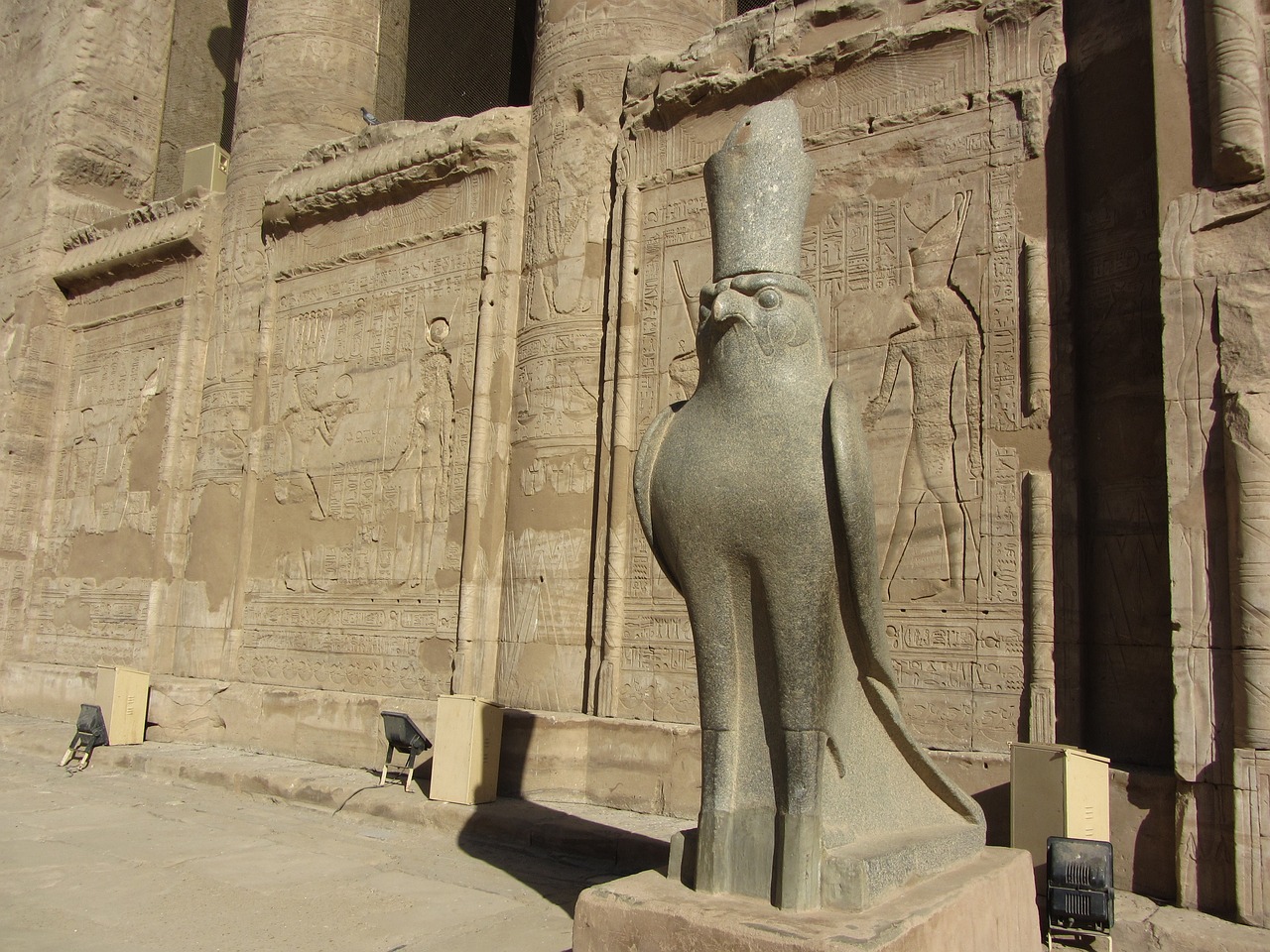Understanding Horus: The Ancient Egyptian Sky God
Horus, a prominent figure in ancient Egyptian mythology, represents two significant deities: Horus the Elder and Horus the Younger. Horus the Elder is noted as a primordial god, while Horus the Younger is famously recognized as the son of Osiris and Isis.
Historian Jimmy Dunn characterizes Horus as “the most significant of the avian deities,” noting the difficulty in categorizing his various depictions across different artworks and inscriptions. Usually, ‘Horus’ refers to either the ancient god from the first generation of Egyptian divinity or the child of Osiris and Isis who eventually overcame his uncle Set, restoring balance to Egypt.
The term ‘Horus’ derives from the Egyptian ‘Hor,’ meaning “the Distant One,” signifying his association with the sky. The elder Horus, known as Harwer or Haroeris, is brother to Osiris, Isis, Set, and Nephthys. The younger Horus, referred to as Horus the Child (Hor pa khered), was later adapted into the figure of Harpocrates by the Greeks after Alexander the Great’s conquest of Egypt. Harpocrates symbolizes quietness and secrecy, often depicted as a winged child with a finger to his lips.
Attributes and Roles of Horus the Younger
Horus the Younger emerged as a formidable solar deity linked closely with both the sun and the moon. He served as the guardian of royalty, brought vengeance against injustice, and symbolized warfare, frequently invoked by pharaohs before embarking on military expeditions. Over time, he fused with the sun god Ra, leading to the creation of Ra-Harahkhte, a composite deity portrayed as a falcon-headed man crowned with the sun and the dual crowns of Upper and Lower Egypt. His symbols included the illustrious Eye of Horus and the falcon itself, representing his dominion over the sky.
The Origin of Horus the Elder
Horus the Elder is revered as one of Egypt’s most ancient gods, born from Geb (earth) and Nut (sky) shortly after the world’s creation. While Osiris and Isis governed the earth, Horus maintained authority over the sky, particularly the sun. Varied sources depict Horus at times as the son of Hathor, illustrating the complexity of his relationships within mythological narratives. The scholar Geraldine Pinch observes early representations of Horus, specifically a falcon in a sun barque, emphasizing his solar associations and protective nature.
Multiple falcon gods, collectively known as Avian Deities, evolved into the figure of Horus, with some appearing early in Egypt’s history and others gaining popularity later. The association of Horus with a local deity like Dunanwi has been debated, but it’s established that he was recognized as Horus-Anubis, illustrating his widespread veneration across Egypt.
Horus and the Narrative of Osiris
The mythology surrounding Horus closely intertwines with the captivating tale of Osiris, a narrative widely propagated through the Cult of Isis. In this account, Osiris and Isis cultivated a paradise where humanity, emerging from Atum’s tears, was taught civilization and equality. However, sibling rivalry brewed when Set, envious of Osiris, plotted to usurp him, leading to Osiris’s demise and casting him into the Nile.
Following Osiris’s death, Isis commenced a quest to resurrect him, leading to the assembling of his dismembered body after Set’s betrayal. Osiris, though revived, could no longer rule on earth and transitioned to govern the underworld. This mythological sequence culminates in Isis conceiving Horus while using her powers to protect him from Set’s threats.
The Rivalry Between Horus and Set
Horus’s saga includes his epic battles against his uncle Set, often framed as a formal tribunal before the Ennead of gods. Conflicts over rightful kingship prompted a series of confrontations that lasted decades, where through trials and tribulations, Horus ultimately prevailed over Set. This extended contest symbolized the struggle to restore balance to Egypt and order to the throne.
In one version, through a clever deception, Isis reveals herself to Set, resulting in his own condemnation and, consequently, Horus ascends as the rightful ruler. Another variant depicts the gods turning to Neith for mediation, suggesting that while Set retains influence over the deserts, Horus reigns over the fertile Nile Valley to nurture the land.
Horus’s Kingship and Worship in Egypt
After overcoming Set’s tyranny, Horus became known as Horu-Sema-Tawy, signifying his role in uniting Upper and Lower Egypt. Subsequently, Egyptian kings identified themselves with Horus throughout their reign, adopting Horus names that reflected their kingship. This identification established a vital connection between divine and royal authority.
Temples dedicated to Horus served as sacred precincts where his followers worshipped, highlighting his importance throughout Egypt. These sites provided various social services and spiritual connections to Horus, including medical advice and protection from malevolent spirits.
The Four Sons of Horus
Horus’s benevolence extended to the afterlife through his Four Sons, guardians of the deceased’s vital organs. Each son represented cardinal points and was associated with a protective goddess, ensuring safe passage and protection in the afterlife.
The Sons of Horus relate to canopic jars, which encapsulated the organs of the deceased, adorned with the heads of their guardian gods. This connection extends Horus’s influence far beyond mortal lives into eternity.
The Horus and Jesus Debate
The worship of Horus, especially during the Cult of Isis, experienced considerable influence on later religious narratives, notably early Christianity. The so-called Horus-Jesus controversy arose from claims that parallels exist between Horus and Jesus Christ, suggesting Christianity drew from Egyptian themes. However, while superficial similarities have been proposed, substantial historical and contextual differences negate the assertion of direct lineage or equivalence between the two figures.
In conclusion, Horus occupies a central and revered position in ancient Egyptian mythology, epitomizing protection, kingship, and the struggle against chaos. His rich narrative tapestry played an essential role in shaping the spiritual and social matrices of ancient Egyptian civilization.



